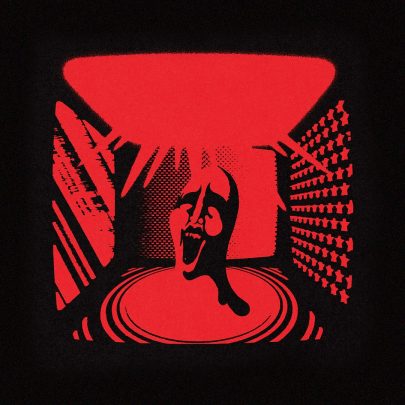Nov 12, 2015 Film & TV
There really aren’t. James Bond is sitting quietly by the bed on which Lea Seydoux’s Madeleine Swann is sprawled as she makes this pronouncement. She’s drunk – hence the double vision – and he’s amused, but he’s far too much the gentleman to take advantage. Also, of course, far too hardened a bastard for us to doubt that he sees Madeleine’s vulnerability – her father has just died – and trusts that the right moment to join her in some bed or other will be along soon enough. We know who Bond is. He can be gentleman and bastard at once, but there are not two Jameses. He’s a very simple soul.
Spectre, the final Daniel Craig Bond movie, would be a stronger film if it were less intent on finding complexity where there isn’t much to be had. Its writers clearly intend it as the triumphal conclusion of the arc that began with Casino Royale in 2006, and it opens with Bond hiding behind a mask. It’s a death’s-head mask. (There is such a thing as too much subtlety, and that is not going to be this film’s problem.) He’s in Mexico City, in the middle of a strikingly well shot Day of the Dead parade: the creams of the building facades and the white road dust all drained to bleached-bone hues, the people all in black or white costumes, with the sole exception of the woman at Bond’s side, who wears dark red. He will shortly take her inside, kiss her, and ditch her unceremoniously for a roof-top assassination attempt.
Director Sam Mendes, back for his second Bond after the more impressive Skyfall, likes his visual symbolism, and he deploys it neatly enough here. Bond enters the film as the inhabitant of a black and white moral universe, but also as a participant in a pageant where no one is what they seem. He’s dressed as death, and accompanied by a woman wearing the colour of desire. All of this is incidental to the usual Bond pre-titles action sequence, which here involves collapsing buildings, a cat-and-mouse chase, and a fight aboard a could-crash-at-any-second helicopter, so Mendes has to be given points for economy. But his imagery is telling us the same thing Madeleine will tell us later: that there are two Bonds, that the driven government assassin is a mask for the real 007, who lost his true love in Casino Royale, lost his surrogate mother and his childhood home in Skyfall, and now stands to lose… but hold that thought, we’re up to the car chase.
The car chase occurs in Rome, where Bond has gone in response to a clue he picked up in Mexico City, after a brief detour back to London in order to be dressed down by the new M (Ralph Fiennes, four-square and dull in this role after the long years of Judi Dench) and expressly forbidden to go off on any more unauthorised jaunts. Further clues will lead him to further picturesque locales, where further set piece action sequences will occur.
But let’s briefly consider the car chase, as the perfect emblem of the challenges facing a new Bond movie in the year 2015. It’s not a bad car chase as car chases go, which is to say I managed to stay awake for its whole length. There’s the high stakes manoeuvring through Those Ever-So-Narrow European Streets; there’s The Bit Where Bond Drives Down A Flight Of Stairs; there’s some by-play involving Clever Car Weaponry Installed By Q. I should think the whole thing would be quite exciting for any 12-year-olds who haven’t seen a single one of the Fast & Furious films; and presumably such 12-year-olds exist, and will be taken to this by elder family members with fond memories of being taken to Bond movies themselves as children.
Which is exactly the issue: the Bond franchise has been running for 53 years. All of its standard elements have passed into the general language of action cinema and become bland, and yet any attempt to avoid using them will be received as a failure of brand identity. There has to be a car chase. There have to be gadgets, and a humorous scene with Q in which the gadgets are explained. (Ben Whishaw’s chic-geek Q is in fact reliably entertaining.) There has to be a title sequence music video, and apparently, even in 2015, it has to have Playboy aesthetics. There has to be a knock-down fight with the Primary Villain’s Major Henchman.
Spectre‘s Major Henchman Fight occurs on a long-haul train. (Just a guess: if you totted up the number of previous Bond films to feature a fight on a long-haul train, it would be lower than 20, higher than ten). The Major Henchman is large, male, and mean; he can be recognised, as in any other Bond film, by his failure to fall down the first time Bond hits him. Shortly before he turns up, Madeleine and Bond have a tender moment over a diner-car dinner, for which each of them has dressed up. (“You shouldn’t stare”, she says to him flirtatiously. “Well you shouldn’t look like that”, he replies: this frat-boy version of debonair banter gives you a sense of how seriously the film’s writing tends to miss its mark.) Madeleine wants to know if Bond is actually living the life he would choose for himself. “I don’t stop to think about it”, he says.
Spectre‘s plot is out-and-out ridiculous, and its pretentions of contemporary political relevance even more so.
Nor should we, if we want to enjoy these films; but the strategy of the Daniel Craig-era Bonds for freshening the franchise’s half-century old formula has been to ask the question. Spectre is where the strategy falls apart. Its plot is out-and-out ridiculous, and its pretentions of contemporary political relevance even more so. (Government assassinations, M argues fiercely at one point, must be carried out by proper government assassins, not drones, because, um, rogue agents who ignore orders and fly planes through random buildings and blow up other buildings by mistake are just classier? Look, actually, can we talk about something else.)
But Skyfall and Casino Royale were just as ridiculous if you thought about it. The point was that they lulled you into riding along with their absurdities. They did this by balancing the formula – the set-piece fights, the car chases, the bread-crumb trail of clues that leads through at least three major global tourist destinations – against a sense that Bond was a real person trapped inside the formula. He had things to lose. He kept on losing them. Daniel Craig’s Bond is a man who kills and bed-hops his way around the world only because the people who might give him a reason to live a more meaningful life keep on dying. He’s the Tragic Bond, the one who can’t take off the death’s-head mask.
Two problems with this. First and most fundamental, angst gets boring. Craig’s Bond is meant to have more complexity and depth than any of his predecessors; in fact he’s still a character who can only sing one song, it’s just that the song is now in a minor key. Second, Craig’s films are meant to follow an overall narrative arc, and the arc is meant to go somewhere. In Spectre, finally, we meet the Man Behind It All, the man who looks Bond in the eye and says gleefully, “I am the author of all your pain.” Bond, not to give away the ending, is going to defeat him; we know this, because winning in the end, whatever the cost, is what Bond does. But if you present someone as the reason for all Bond’s pain and then defeat him, what reason is there for further pain? And if you present the pain as the thing which traps him inside his mask and then take away the pain, what reason is there to keep the mask on?
In other words, this film sets itself on a path whose implications are the end of the Bond franchise. Either the emotional logic driving the story has to somehow be derailed, or the impossible has to happen: James Bond’s story has to come to an end. This is what happens when you try to retool a two dimensional 1960s character into a Jason Bourne-era complex hero, and it’s the underlying reason Spectre, for all its nicely executed stunts and fight scenes, ends up feeling so flat. It’s trying to go somewhere it can only pretend to go.
James Bond is simply not a character who can ever change, and because this is true it makes a mockery of the torture inflicted on him by Christoph Waltz’s giggling villain. There is only one James, and any attempt to make his movies more interesting by suggesting otherwise will ultimately peter out. He’s Bond, James Bond, world without end.





